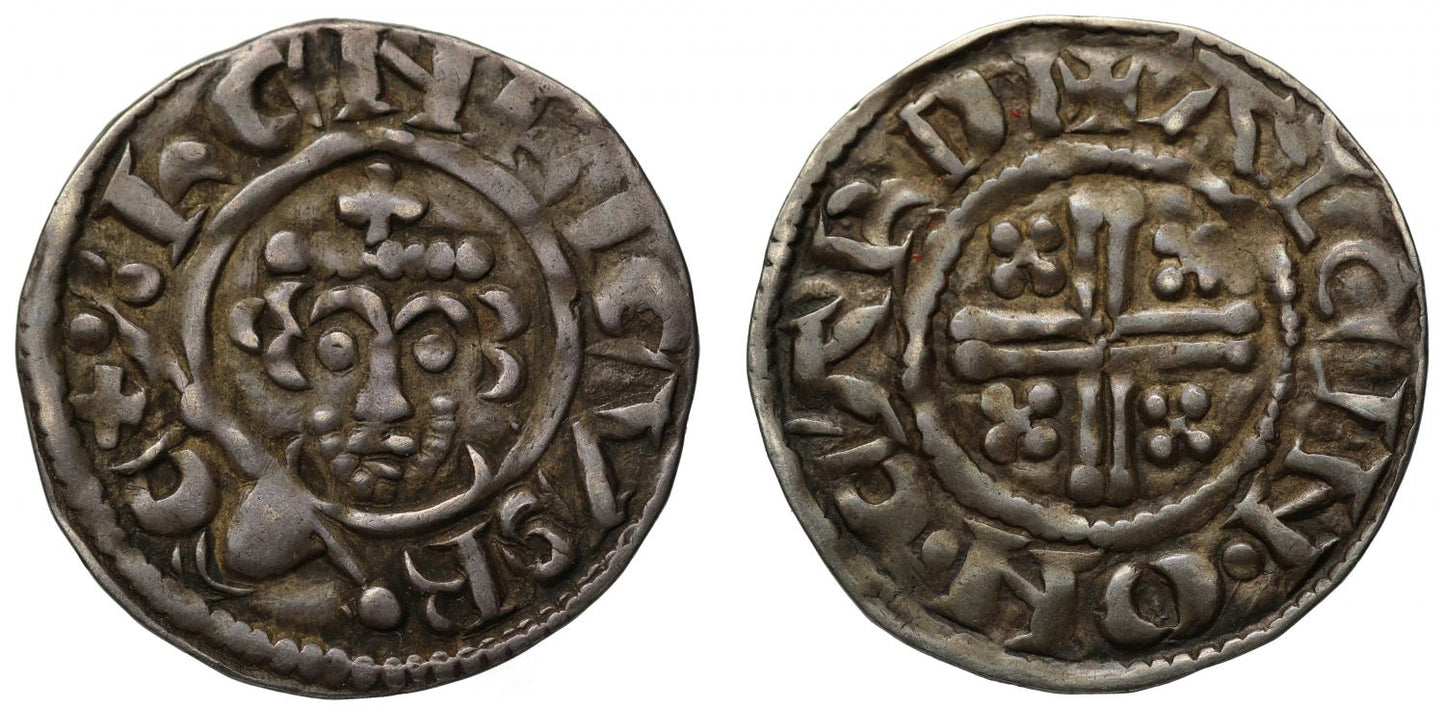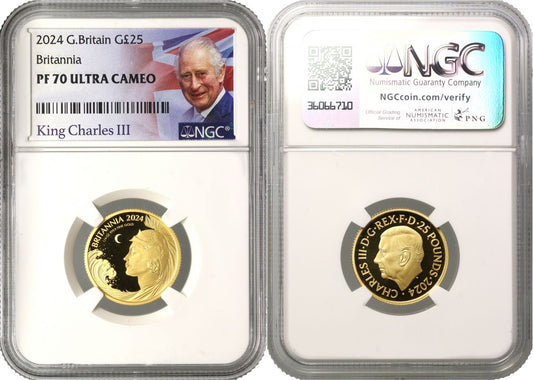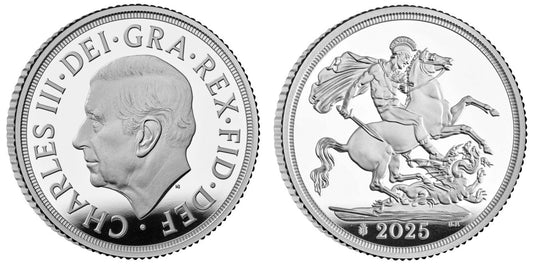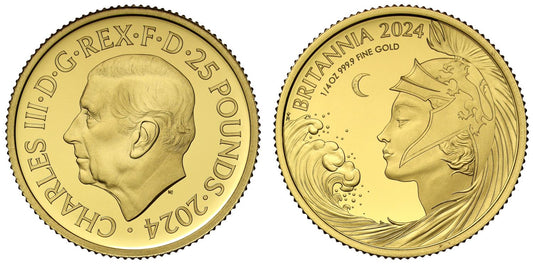FAQs
What makes a coin valuable?
I have coins to sell, what’s the next step?
How will my purchases be shipped?
What happens if I’m not entirely happy with my purchase?
Richard the Lionheart, short cross Penny, class 4a, Carlisle Mint, moneyer Alain
Richard I (1189-99), silver short cross Penny, class 4a (c.1194-c.1200), in the name of his Father, Carlisle Mint, moneyer Alain, facing crowned head with linear collar, hand holding sceptre at left, Latin legend and beaded borders surrounding both sides, commences upper left, hENRICVS R E X, rev. short voided cross pommee, small cross pommee in each angle, +ALaIN. ON. CARD, note lower case A in moneyer name, weight 1.46g (BNJ XLIX, Allen dies 425/425 and pl. vii, 40, this coin;cf.Mass 954; N.968/1; S.1348A). Toned, well struck and centred, very fine and very rare.
All of the coins dating to the reign of Richard I by class, are depicted in the name of his Father King Henry II as are those of King John who succeeds him. The legend therefore reads "Henry King" on the obverse and "Alain of Carlisle" on the reverse.
The third son of King Henry II, Richard was born on 8th September 1157 and with his elder brothers pre-deceasing him, and after a final rebellion against his Father in 1189, shortly after which the King died probably from complications of an ulcer, Richard inherited the Angevin Empire. He was also Duke of Normandy, Aquitaine and Gascony, Lord of Cyprus and Count of Poitiers, Anjou, Maine and Nantes, and additionally at varied times Overlord of Brittany. He became known as Richard Couer De Lion, in English "Richard the Lionheart" due to his great reputation as a military leader having commanded his own army as young as age 16. He was successful in putting down rebellions in parts of his own kingdoms and was an important Christian Commander in the Third Crusade leading the campaign after Philip II of France had departed. He achieved considerable victories against Muslim counterpart Saladin, finalised a peace treaty by 2nd September 1192 and ended the campaign without retaking Jerusalem, perhaps partly due to falling ill from arnaldia leaving on 9th October 1192 intending to return to England.
Richard lived most of his adult life when home in the Duchy of Aquitaine where his coinage actually carries his name. He may have spent as little as six months actually in England in the decade long reign, and this goes some way toward explaining why his English coinage continues in the name of his Father, and that perhaps he saw the revenues generated by England as something merely to fund and support his armies and military campaigns which were numerous.
Richard was captured shortly before Christmas 1192 near Vienna by Leopold of Austria having never made it back to England after being shipwrecked, and was kept prisoner at Durnstein Castle which contravened public law leading to Leopold's excommunication by Pope Celestine III. Subsequently on 28th March 1193 Richard was handed over to Holy Roman Emperor Henry VI at Speyer who imprisoned him in Trifels Castle as he felt aggrieved by lack of prior Plantagenet support. Pope Celestine hesitated in excommunicating H.R.E. Henry VI and Richard ended up being kept in heavy chains whilst a 150,000 mark ransom was demanded which was up to three times the annual income of the English Crown. Eventually enough money was raised and delivered to Germany and Richard was released on 4th February 1194.
In Richard's absence his brother John had revolted but was forgiven and named as heir in place of Richard's nephew Arthur, and at Winchester on 11th March 1194 King Richard was coronated for a second time to mark his release from captivity. He then began a reconquest of Normandy and concentrated a great deal of time, effort and resources over the next few years building one of the most expensive castles ever constructed 1196-98 Chateau Gaillard costing up to £20,000 (total expenditure on castles in England at this time was £7,000) with fortifications a century ahead of their time. Richard won several victories in France at this period causing Philip of France to flee and the adoption of the motto "Dieu et mon Droit" - literally "God and my Right" still used by monarchy today. However, whilst Richard was suppressing a revolt at Limousin by Viscount Aimar V of Limoges he was hit by a crossbow bolt in the shoulder on 26th March 1199 which turned gangrenous. Richard asked for the bowman to be brought to him, and it turned out to be a young boy (various names are chronicled for him) who claimed that Richard had previously killed his Father and two brothers. Richard chivalrously forgave the boy and set him free with 100 Shillings and then eventually succumbed to the gangrene on 6th April 1199.
Richard married Berengaria of Navarre on 12th May 1191 she having made the journey with Richard's mother Eleanor of Aquitaine to catch him up on the advent of his Third Crusade culminating in her having to be rescued by Richard after running aground on a ship off Cyprus. Richard had to capture the island from Isaac Comnenus the ruler of Cyprus from 1184-91. They subsequently married and she was coronated as Queen of England on the same day by the Archbishop of Bordeaux at the Chapel of St George in Limassol. Berengaria never set foot in England whilst Richard was King though she may have visited after his death and she lived on childless until 23rd December 1230 and was said she was owed £4,000 by King John on his death in 1216 in pensions. Richard had one illegitimate son, Philip of Cognac (c.1180 - after 1201) from an unidentified mother. Richard's heart was buried at Rouen Cathedral, his entrails at Chalus where he died and the rest of his body at Fontevraud Abbey in Anjou.
Some sixty miles west of Newcastle, the City of Carlisle on the River Eden was devastated by the Danes in 875 and in ruins until 1092 when William II fortified it by building a castle. The silver and lead mines on nearby Alston Moor were used to supply the mint with metal during the twelfth century and a Bishopric was established in 1133. David of Scotland seized the town on the accession of Stephen but later in the Peace of Durham, was confirmed to his son Henry. In 1139 the town was ceded with his Earldom of Northumbria to the Scottish crown and not restored to the English till 1157. Minting activity occurs from Henry I to Henry III with issues of David of Scotland and Henry of Northumbria.
The relatively recently published book "The Metal in Britain's Coins" by Dr Graham Birch and published by Spink has a chapter devoted to the sources of medieval silver coinage, and one of the few issues traceable to silver mined locally in England, is the penny coinage of the Carlisle Mint from the later Norman reigns of Henry I and Stephen to that of Henry II and Richard I. Henry I visited Carlisle in 1122 and was impressed by the minting potential first establishing a mint there having commissioned extra defences, and a rental from the Burgesses of £5 a year is recorded to the King from 1125 onward. This fee had jumped to £45 per annum by 1130 and then to £500 by 1133 clearly showing the success from a discovery of a new vein of silver near Cross Fell in the Silver Beck-Minersdale region. The powerful Erembald family from Flanders soon arrived to become involved in the minting activity, and three generations over a fifty-year period dominated the moneying of coinage in this region continuing through the Anarchy period in the reign of King Stephen. Stability returned with the advent of the reign of Henry II and in 1158 Henry reorganised the royalty payments system taking away the miners rights to silver giving them only a revenue stream from the lead by products. Henry offered them the chance to mint as well as mine giving the opportunity for integrated business, that was first taken up by William Fitzerembald. Henry also authorised a new mint to open at Newcastle and William operated at both locations on a combined rental of £100 a year. An auction process of the rights to mint and mine occurred on an annual basis, and though Fitzerembald was usually the winning bidder against all comers at ever higher levels, he sometimes failed to meet the rental targets, accruing an eventual debt of some £2,100. The activity certainly boosted the economy of this northern area and Dr Birch estimates that the mines accounted for about 1% of the national gross domestic product of England at this time. William Fitzerembald did lose the rental for 1180-81, and again in 1184-85 when it was run by custodians with more proper accounting passing to Alanus Monetarius - Alain as we have here on this coin, who either alone or with partners ran the mint and mines till 1198 at lower rent levels than his predecessor and met his targets. He perhaps also operated at Durham. For further detailed reading it is advised to consult Dr Birch's learned publication.
Provenance:
Ex F. Elmore-Jones, Part II, Glendining, 10th April 1984, lot 1502.
Ex John Mattinson Collection of Carlisle Mint, part I, Dix Noonan and Webb, Auction 164, 9th October 2019, lot 2250.
Ex Collection of an English Doctor part III, Sovereign Rarities fixed price list online August 2022.
FAQs
What makes a coin valuable?
I have coins to sell, what’s the next step?
How will my purchases be shipped?
What happens if I’m not entirely happy with my purchase?













